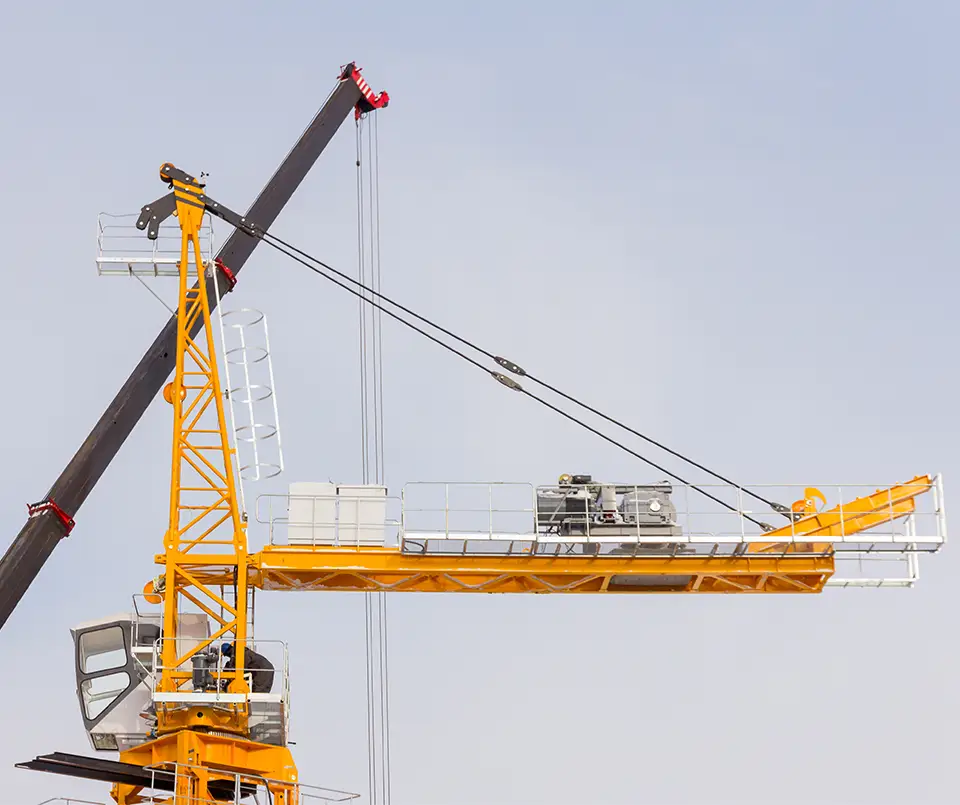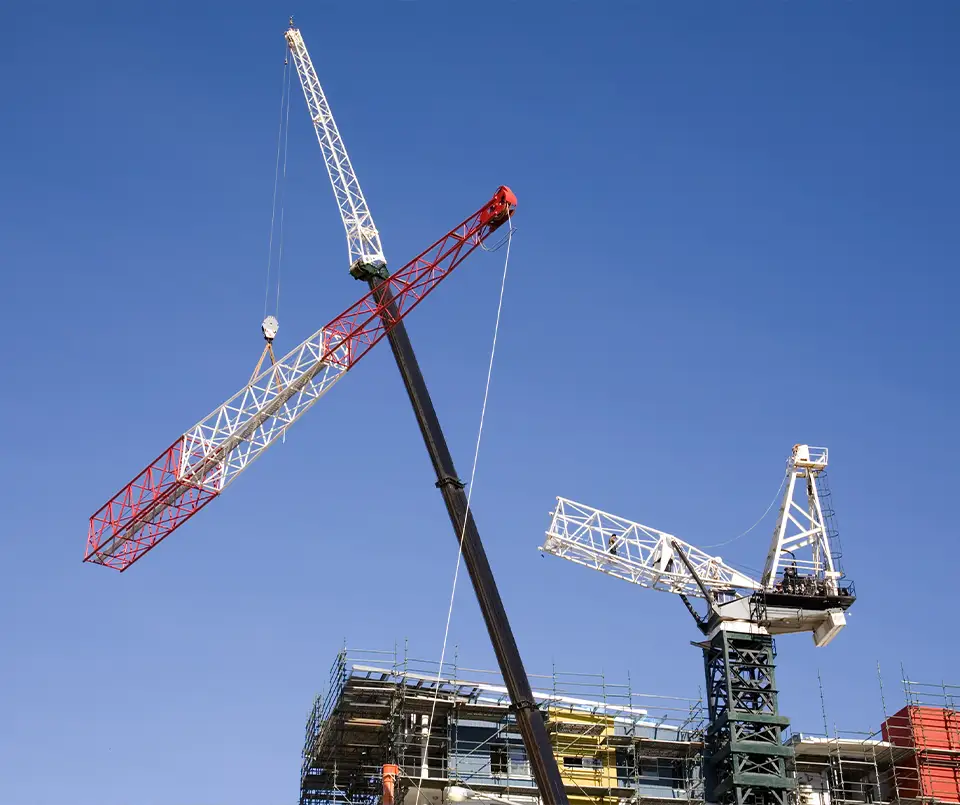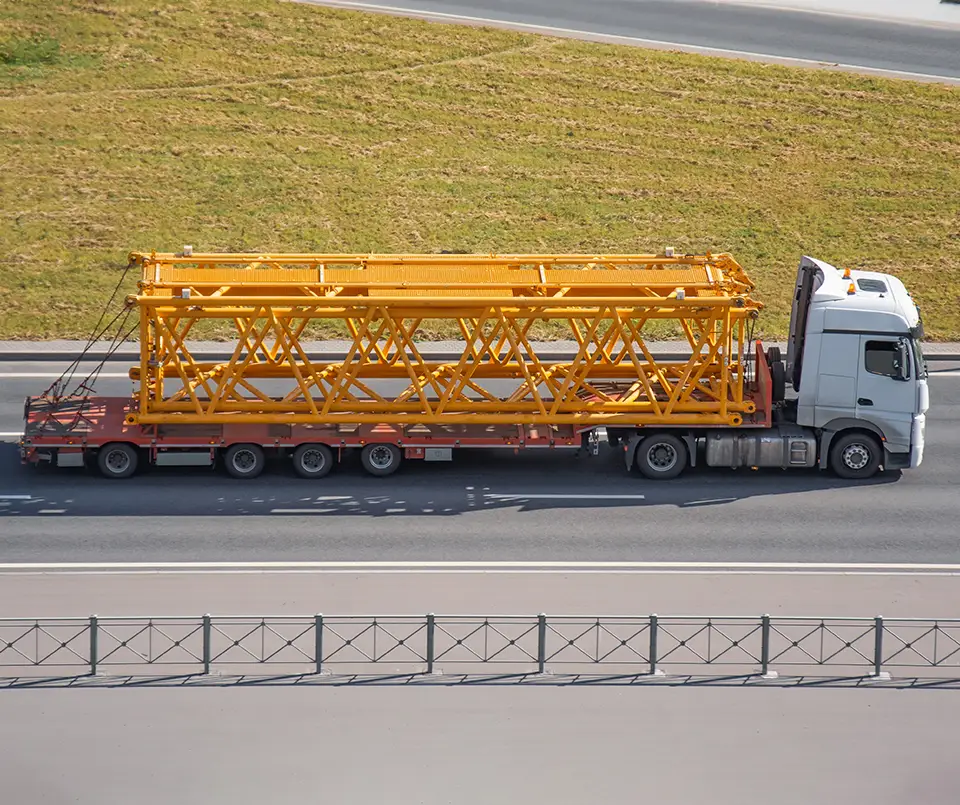

Tower cranes, essential in the skyline of construction sites, are pivotal for building skyscrapers and bridges. These structures, symbolizing both strength and precision, are at the heart of urban development. The first step in appreciating tower cranes is understanding their basic structure and the different types that exist, setting the stage for a deeper insight into their construction, installation, and how they are moved.

Tower cranes, central to the construction of high-rise buildings, are marvels of engineering that combine strength with precision. Their intricate design is a testament to modern engineering, tailored to meet the demands of various construction projects. Understanding the structure and types of tower cranes is essential for anyone involved in urban development and construction.
Each tower crane consists of several critical components. The base, firmly anchored to the ground, ensures the stability of the entire structure. Rising from the base is the mast, also known as the tower, which provides the crane with its significant height. This mast supports the slewing unit, a crucial part allowing the crane to rotate a full 360 degrees. Extending from this unit is the jib, the long horizontal working arm used for lifting materials. Opposite the jib is the counter-jib, which holds weights to balance the crane's load. Additionally, the operator's cabin is situated on top of the mast, offering a panoramic view of the construction site and enabling precise control of the crane's operations. This combination of elements ensures that tower cranes can efficiently and safely lift heavy loads at considerable heights.
Tower cranes are categorized based on their structural design and functionality. The two primary types are the hammerhead crane, which features a fixed jib, and the luffing jib crane, designed with a jib that can move up and down. Each type serves a specific purpose in construction.
Hammerhead cranes are renowned for their higher lifting capacities and stability, making them ideal for large-scale, heavy-duty construction tasks.
Luffing jib cranes, with their ability to adjust the working radius, are perfect for projects in densely populated urban areas where space is limited.
Additionally, self-erecting tower cranes present a solution for sites with space or time constraints. These cranes are smaller and can be assembled rapidly, offering flexibility and efficiency for smaller projects or those requiring frequent relocation of the crane.
Selecting the right type of crane is a critical decision in construction projects, impacting efficiency, safety, and overall project cost.
The installation process of a tower crane begins with meticulous preparation. This phase involves planning the layout of the crane on the construction site, taking into account space constraints and the load requirements of the project. Specialists conduct thorough site inspections to determine the optimal placement for the crane, ensuring it can operate efficiently without obstructing other construction activities. During this stage, the foundation for the crane is also designed and constructed. This foundation, typically a large concrete pad, is critical for providing stability and support to the towering structure.

Once the site is prepared and the foundation set, the actual assembly of the crane begins. This involves positioning and securing the base of the crane onto the foundation. Next, the mast sections, or the tower, are brought in and pieced together. This process is often assisted by mobile cranes or other lifting equipment. The assembly continues with the addition of the slewing unit, the machinery that enables the crane to rotate. Careful attention is paid to ensure all connections are secure and precise. This stage of installation sets the groundwork for the crane to be fully operational.
Erecting a tower crane is a highly specialized operation that builds upon the completed installation. After the crane's base and mast are assembled, the next step is to add the jib, the crane's main lifting arm, and the counter-jib, which balances the crane's structure.
The erection process requires skilled technicians to carefully connect these components, ensuring proper alignment and balance.
As the crane takes its final shape, it's essential to conduct a series of functional tests. These tests assess the crane's mechanical and operational integrity, confirming its readiness for construction tasks.
Throughout the erection process, safety is of utmost concern. Each phase is executed under strict safety protocols to prevent accidents and ensure the structure's integrity. This includes constant monitoring of environmental conditions, such as wind speeds and weather changes, which can impact the erection process. Technicians and engineers involved are highly trained in safety procedures specific to tower crane erection, ensuring every aspect of the process is conducted with precision and care.
The process of dismantling and relocating tower cranes is as complex and crucial as their construction and erection, involving meticulous planning and execution.
Dismantling a tower crane is a carefully orchestrated procedure, often marking the end of its role at a construction site. This process begins with the removal of the crane's load and counter-jib, followed by the disassembly of the jib and the slewing unit. Each section is methodically detached and lowered, typically using auxiliary cranes or heavy-lifting equipment. The mast sections are then disassembled in the reverse order of their erection.
Throughout the dismantling process, the same rigorous safety protocols followed during erection are applied to ensure the safety of the workforce and the integrity of the components for future use. The dismantled parts are then thoroughly inspected, cleaned, and prepared for transport to their next destination or storage.

Moving a tower crane from one site to another involves significant logistics. The dismantled components are carefully cataloged and loaded onto transport vehicles, often large trucks or trailers, designed to handle heavy loads.
The movement of these parts requires careful route planning, considering road conditions, transport regulations, and the need for special permits, especially for oversized loads. The coordination between the dismantling team, transportation crew, and receiving site is crucial to ensure a smooth transition.
At the new site, the crane undergoes a similar installation and erection process, adapted to the specific conditions and requirements of the new location.
In this comprehensive look at tower cranes, we've examined the intricate processes of building, erecting, moving, and dismantling these essential components of modern construction. From understanding their basic structure and types to delving into the complexities of their installation and operation, it's clear that tower cranes are more than just tools; they are engineering feats crucial for urban development.
Tower cranes play a pivotal role in constructing the buildings that shape our cities. Their careful construction, precise installation, meticulous erection, and strategic dismantling and relocation are all critical steps that require expertise, precision, and safety consciousness. These processes reflect the remarkable capabilities of modern engineering and construction.
For those in the construction industry, or anyone interested in the mechanics of urban development, the knowledge of how tower cranes function is invaluable. It's a reminder of the importance of meticulous planning, strict safety protocols, and continuous learning in the ever-evolving field of construction.

An All Purpose Safety Training Solutions Company